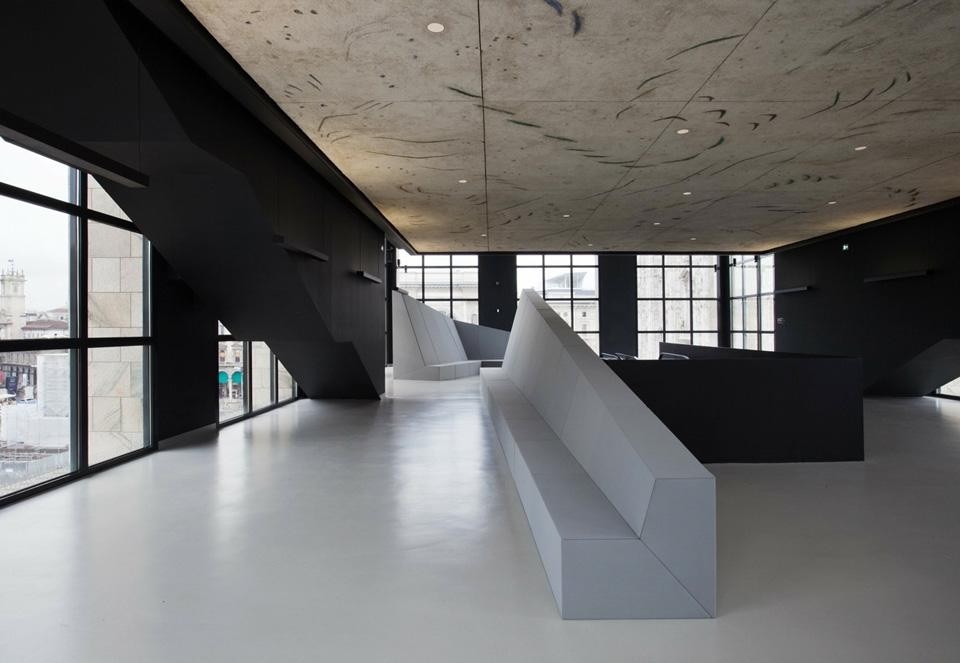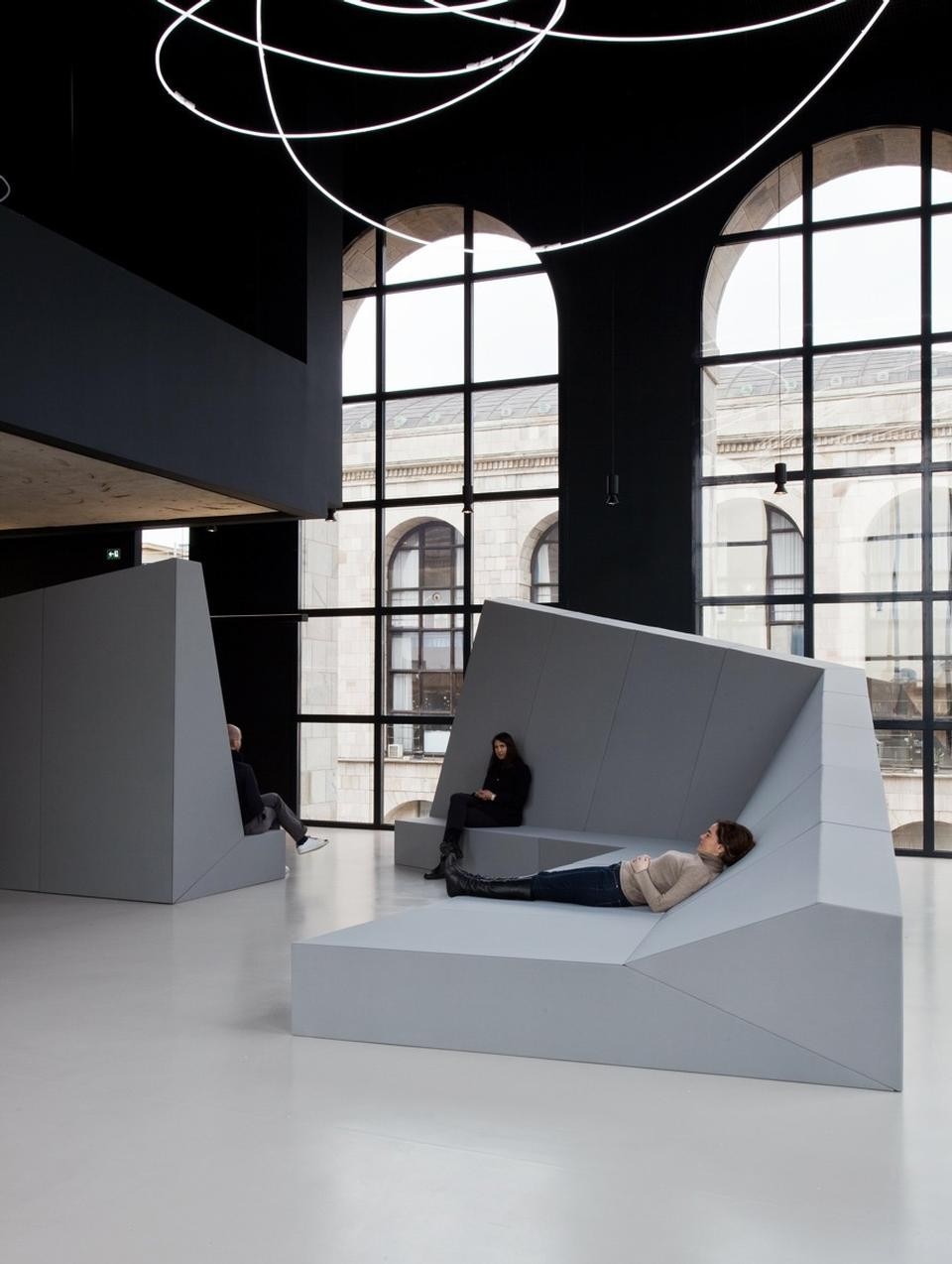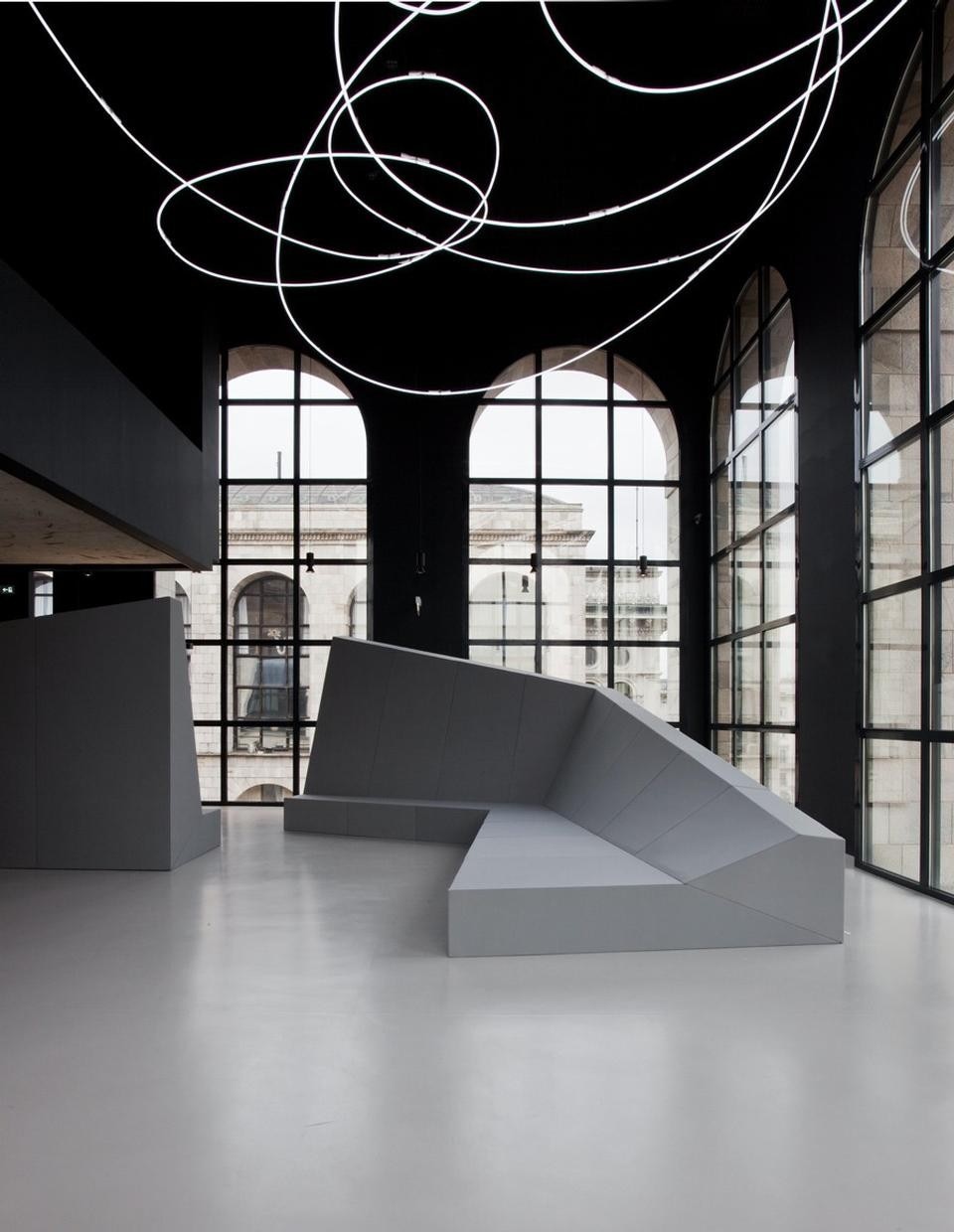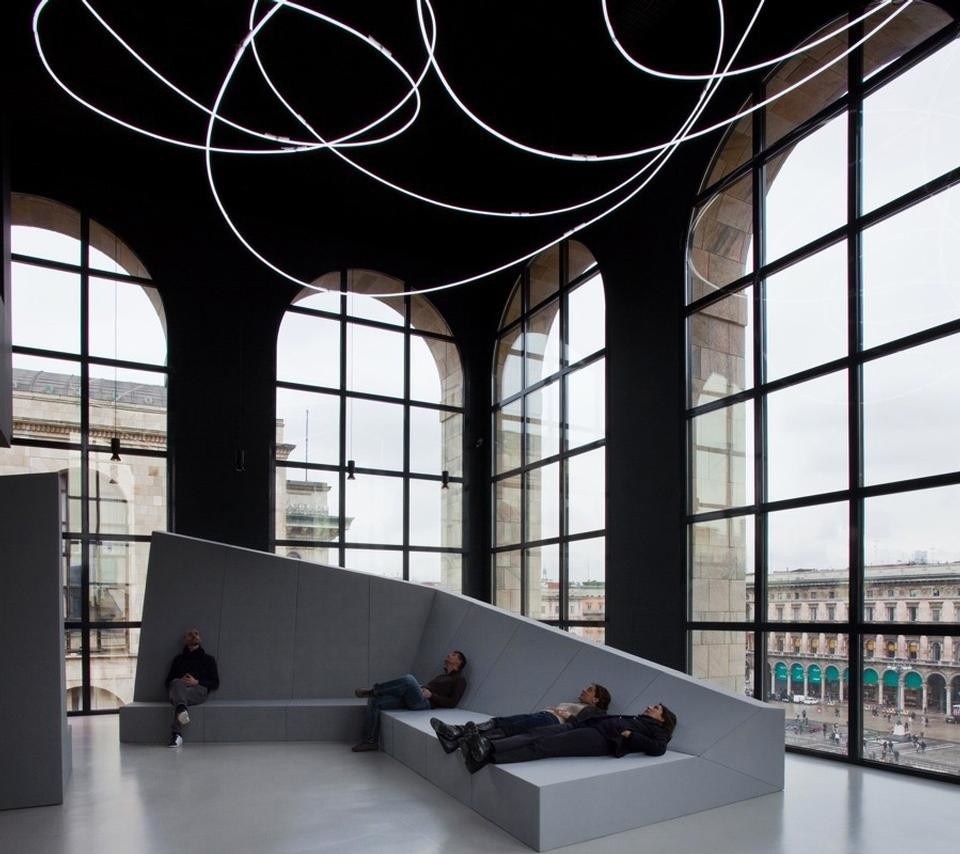The starting point for the architects' project was one of Lucio Fontana's most famous Spatial Concepts, the neon arabesque structure created for the 1951 Milan Triennale. With this crucial work for the city and the history of international art in mind, Kuehn Malvezzi thought up Seeing Machine, an architectural work but also an invitation to be transported into another world. Seeing Machine is a sort of telescope directed at Fontana's artwork which, at the same time, shows views of the city. It comprises two large architectural elements that take visitors on a new route around the splendid Sala Fontana and, by steering them into specific trajectories that show precise points of view, prompts them to stop and reflect on a certain detail or sit down and observe the great master's work, the museum housing it and the surrounding cityscape.
How did this project originate?
The project is based on an idea that came to Cloe Piccoli, who is familiar with our work on exhibition spaces and asked us to work on the Sala Fontana. We thought it out with her and developed Seeing Machine.
What does dealing with a master such as Lucio Fontana mean to architects like you?
Fontana theorised and defined the concept of artwork in relation to space and its perception as it moves in space. When we design museums and exhibition spaces, we start from the routes and the relationships between artwork and visitor.

A display of focused realities. Seeing Machine generates new and previously unseen perspectives on the reality of the artwork and its current context in the Museo del Novecento, activating a visitor reaction in the space.
How do you relate to a space such as the Museo del Novecento?
You have to ask yourself questions on the history of the Arengario, its conversion to a museum and the display of the collection. It is a complex place, full of elements that are difficult to work with. We were interested in the idea of breaking the symmetry of the monumental architecture and creating dynamic routes in the space.

It is the dynamic created by adding or removing something.
Your installation accompanies visitors on a route. The installation invites them to see. Have you any predictions on visitor reactions?
The visitors must interact with the route and try out the different seating positions, which pass gradually from the more rigid to a more stretched out position – like in a dentist's chair, at which point you are almost forced to look at Fontana's neon arabesque.
The world is full of objects and full of artworks: challenge seems to be more one of curatorial design to create new and more intelligent relations between the already existing

The world is full of objects and full of artworks. With all this overcrowding, the challenge seems to be less one of inventing more objects and more one of curatorial design to create new and more intelligent relations between the already existing. In this sense, both art and architecture must be conceptual and act precisely in concrete situations, avoiding all narcissism. It means generating new perspectives on what is already there, or creating new uses for existing objects and new relationships between known artworks via new spatial relations.


